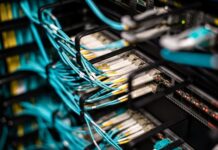The internet allows people to do ordinary jobs and communicate with others. However, relatively few individuals know that internet technology is meant to connect across gadgets. One of them is LoRa. It enables electrical devices, without human intervention, to interact with one another. Isn’t it interesting?
Let us learn more about and usage of LoRa Radio Technologies.
What is LoRa?
LoRa devices and networks allow smart IoT applications that resolve problems facing the world such as reducing natural resources, managing energy, making infrastructure efficient, controlling pollution, and preventing disasters.
Lora is a technique of spectrum-spread modulation evolved from the technology CSS or Chirp Spread Spectrum. LoRa is a wireless communication protocol of long-range, low-power, which has become a de-facto wireless IoT standard.
LoRa devices have collected several usage cases for clever homes, buildings, towns, communities, agriculture, metering, supply chain, logistics, and other applications. LoRa builds a smarter globe with millions of networked devices in more than 100 countries.
What is LoRa Radio Technology?
LoRa allows the data interchange in IoT networks and is a basis for the public, private and hybrid networks, as a radio signal modulation technology. A LoRa network has wider coverage than cellular networks where signals may flow for up to 15 km and consume less energy. A LoRa network needs the correct functioning of its main server, its base station, and its endpoint devices.
The endpoints observe and supply telemetry with measuring equipment. The base stations collect and send information from endpoint devices to the central server. This central server, called LoRaWAN Network Server (LNS), analyses and stores the collected data, and oversees the functioning of base stations and endpoints.
LoRa uses radio frequencies on the sub-gigahertz band. They are –
- North America and Australia: 915 MHz
- Asia: 923 MHz
- Europe: 433 MHz, 868 MHz
In most nations, these frequencies are license-free. So the equipment to set up a LoRa network is all you need. The server connects via an IP channel to the LoRa gateway. The LoRa gateway connects endpoint devices with the modulation of the spectrum by radio waves. In between the endpoint devices and the gateway two-way communication is protected. Data from several endpoint devices can be accessed via a gateway.
How is this LoRa technology used?
There are several implementations of the LoRa protocol in many industries. The technology enables monitoring, management, and control systems to be automated and simplifies their operation. Here are other methods to use LoRa technology —
Utility Consumption Metering
Intelligent meters automatically gather measurements and communicate them to suppliers of electricity, water, heat and gas.
Detectors of leakage
These sensors detect water and gas leaks and warn and alert infrastructure managers.
Lighting of Street
IoT networks manage intelligent lighting systems. With LoRa, luminaires may be activated or deactivated, their light can be modified and the state of each device observed.
Intelligent parking lot
In order to identify unoccupied parking places and inform the system of them, LoRa sensor is incorporated into the car park equipment. The system designs an information-based parking map shown on the screen at the entrance of the parking lot.
Monitoring of vaccine cold chain
When used, LoRaWAN sensors guarantee that vaccinations are retained throughout transit at optimum temperatures.
Patients with dementia
Fall detection and medication tracking may be performed via the combination of LoRa with wristband sensors.
Conservation of animals
The use of tracking sensors enables tracking of endangered animals such as Amur Leopards and Black Rhinos.
Security of Food
Monitoring the temperature by means of sensors enables maintenance of food quality.
Preservation of water
Identify and reparate water network leaks more quickly.
Bins of clever waste
When issued to the employees, trash bin level notifications optimize the garbage collection schedule.
Tracking Airport
Personnel, vehicles and baggage tracking services are GPS-free.
Intelligent Bikes
Track bicycles in congested buildings and distant regions using bike trackers.
Health of Cattle
Health of cattle, sickness detection and delivery periods of calves may be tracked.
Workspace efficiency
In order to make them more efficient, temperature, room occupation and energy use in workplaces may be monitored.
Environmental conditions monitoring
These devices regularly collect data on air and water pollution and report to the system manager.
Agriculture
For real-time soil moisture monitoring and chemical composition, farmers use wireless sensors.
LoRaWAN Protocol for Data Transfer
LoRa indicates the material usage of radio waves, while LoRaWAN is a data transmission protocol. It ensures high radio wave permeability and allows interaction between terminal and base station devices, signal frequency, power control, and transfer speed. LoRa resembles the human voice; LoRaWAN resembles the language.
LoRaWAN is applied in vast networks with little power, where signals may travel in line-of-sight situations up to 15 kilometers long. It allows devices to communicate data even from far-flung regions like built-up and subterranean areas.
LoRa long range key characteristics
In crowded urban or deep interior environments and rural locations, LoRa links devices 30 miles apart.
Secure
The system provides reciprocal authentication, encryption, secrecy and preservation of integrity.
Standardized
LoRa offers international device compatibility and availability for fast deployment of IoT applications over LoRaWAN networks.
Low Strength
The energy required is reduced, the battery life is 10 years, and battery substitution expenses are minimized.
Mobile
It facilitates connectivity with power consumption-free devices.
High capabilities
LoRa supplies millions of messages per base station and addresses the demand for large-scale public networking operators.
Geolocation
Allows GPS-free tracking applications that provide outstanding low-power benefits without other technologies
Cost Low
Reduces finance for infrastructure, battery substitution and ultimate operational costs.
Why LoRa?
LoRa devices are already heading toward the future worldwide, as are other disruptive technologies that will progressively earn global acceptance and recognition. LoRa recognizes the Internet of Things (IoT) potential with various use cases and thousands of devices in each populated continent. According to an analytical group, by 2026, LoRa will be the leading network technology for low-cell widescale (LPWA). More than half of all LPWA non-cellular connections are made available.
Simplified market access
LoRa devices allow entrepreneurs to transcend the previous barriers to an IoT solution. It offers complete integration, an all-encompassing environment that supports LoRa devices.
Technology Gap Completion
By permitting long-term data transmission with the usage of less electricity, LoRa has revolutionized IoT. LoRa networks fulfill the technological gap of the high power or high bandwidth networks of Cellular, Wi-Fi, Bluetooth Low Energy networks, with restricted range or deeper inside conditions.
5G Gap Crossing
LoRa’s IoT networks fulfill special needs when devices run on batteries and survive over long periods of time. Lora integrated networks offer a range of communication of over 5G. 5G is ideal for applications such as video conversations that are ultra-low latency. LoRa-based networks may, however, be used to trace assets, water and gas, and many other applications where physical structures need to be penetrated.
Deployment Multi-RAN
LoRa networks and devices for indoor, outdoor or private networks implemented on public and hybrid networks are extremely secure. The LoRa devices and networks combine these Wi-Fi and cellular advantages and provide efficient, versatile and economical solutions for communication.
Flexible options for network deployment
LoRa Devices are adaptable in its network deployment approach. It allows multiple business models as an open platform running on an unlicensed spectrum. Several novel network deployment strategies evolved, including incentivizing blockchain or cryptocurrency gateway installations. In addition, clients might decide to build their own network
Ecosystem Scaling Quickly
The LoRa ecosystem encompasses a wide range of network operators, designers, service providers, hardware producers, and industry groups that play an important role in facilitating networks, devices, and applications.
For extended range connectivity, IoT systems use current cellular networks. The benefit comprises a strong network with rapidly available hardware for development and different protocols and interfaces. The downside of utilizing cellular networks, unfortunately, outweighs the positives. For example, it can be costly to use mobile networks. Complex radio environments cannot be addressed with cell solutions. So, rather than focus
Final Word
LoRa and LoRaWAN protocol are making business efficient and improving lives globally by boosting IoT sector applications. LoRa devices have restructured the Internet of Things by enabling long-range data connection while requiring less energy. LoRa is versatile for indoor and rural applications in intelligent cities, intelligent agriculture, industrial information technologies, intelligent environments, intelligent utilities, clever houses, and buildings, measuring and the intelligent supply chain and logistics.








![How to Fix [pii_email_6b2e4eaa10dcedf5bd9f] Error Code? [pii_email_6b2e4eaa10dcedf5bd9f]](https://www.techwebtopic.com/wp-content/uploads/2022/02/pii_email_6b2e4eaa10dcedf5bd9f.jpg)







